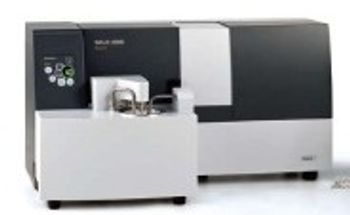
WingSALD II software is world’s first to provide automatic refractive index calculation
A material’s particle size distribution can have a major impact on the desired characteristics and performance of a final product. The new SALD-2300 laser diffraction particle size analyzer from Shimadzu Scientific Instruments measures wet or dry materials to ensure outstanding product quality in the pharmaceutical, food and beverage, ceramics and electronics industries.
The SALD-2300 provides continuous measurement in real time, at minimum one-second intervals. Its measurement range spans particle sizes from 17 nm to 2,500 μm, and users can select various sample amounts depending on measurement objectives. The instrument’s Wing Sensor II achieves high-resolution particle detection with its 78 concentric detector elements. In addition to the Wing Sensor II, one sensor detects side-scattered light, and five other sensors are used for back-scattered light.
The SALD-2300 comes with WingSALD II software, which is the world’s first software to automatically calculate an appropriate refractive index based on the light intensity distribution reproduction method. This function eliminates the challenges associated with selecting refractive indices. The SALD-2300’s measurement assist function reduces operation errors by allowing users to prepare standard operating procedures to ensure measurements are always performed using the same conditions and procedures.
The system uses an omnidirectional shock absorption frame (OSAF) to improve instrument stability and provide high-reproducibility. The instrument rarely requires adjusting because the OSAF isolates all elements of the optical system from impacts, vibration and external disruptions.
The SALD-2300 features a powerful self-diagnostic function that checks output signals from each sensor and detection element, as well as the system’s functional status. The operation log stores detailed information with all measurement data, including instrument contamination status and operating status. This allows users to retroactively verify measurement data and confirm cell contamination status.
